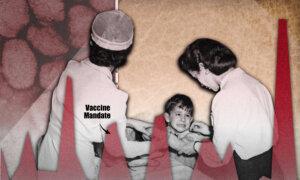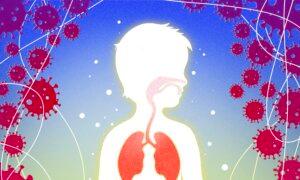Hospitals strained across the US as over 2 million Americans now infected with COVID each day
On Tuesday, Biobot Analytics published their latest data on COVID-19 wastewater levels in the United States, which scientists estimate now correlate to over 2 million infections per day, the second-highest figure of the entire pandemic.
The current wave is now 20 percent higher than the peak seen in January 2023, after which the Biden administration and the World Health Organization (WHO) moved to arbitrarily end their respective COVID-19 public health emergency (PHE) declarations in May 2023. These unscientific decisions led to the rapid dismantling of all vestiges of pandemic surveillance, including accurate data on testing, hospitalizations and deaths, leaving wastewater data as the sole reliable metric on viral transmission.
While Tuesday’s data indicate that the current wave of infections appears to be peaking, this will only be clear once next week’s data are released. Regardless, the US remains mired in a horrific wave of mass infection with a virus that is still hospitalizing and killing masses of people globally and causing untold long-term damage to the health of the population.
The current surge is being driven by the JN.1 variant, which rapidly became dominant in the US and across the globe over the last several weeks. Corresponding with these waves of infections, hospitalizations have also started to rise, with many health systems inundated in the US, Canada and Europe.
Weekly hospitalizations across the US jumped 20 percent for the week ending December 30, compared to the week prior, and have more than doubled since the first week in November. Much of this is affecting those 70 years or older, who are at greater risk of death from their infection.
In Ohio, which is currently experiencing its highest wastewater levels of any point in the pandemic, emergency room physician Dr. David Christopher bluntly noted, “It’s a total plague ward shitshow in most emergency departments right now. Don’t believe me? Then ask anyone you know who works in one. If they’re being honest, willing to talk and aren’t too exhausted, you’ll likely hear some horror stories. It hasn’t been this bad since December 2021.”
North Carolina recently hit its highest level of COVID hospital admissions for the pandemic. It is one of several states to have some hospitals reinstate mask mandates in an attempt to curb the high rates of COVID transmission in the health sector. Those at or over 70 years of age account for nearly 60 percent of admissions.
Healthcare workers at Michigan Medicine in Ann Arbor, speaking with reporters from the World Socialist Web Site, said they were facing overcrowded emergency departments and ICUs over capacity. One worker observed, “COVID is rampant. Keep your masks on. It’s ramping up. Biden thinks it’s nonexistent, management thinks it’s nonexistent, too. I don’t think we are testing anyone. We are testing if they are a suspected case, but we don’t always know.”
Another nurse added, “What worries me the most is patients who are getting COVID when they are in the hospital. Then the roommate gets COVID too. And we don’t even move the patient anymore when they get COVID. There are no rules about informing the roommate either.”
In a recent TikTok post by a US healthcare worker who chose not to name her hospital or region of the country, she remarked, “I’m just letting you guys know from someone who works in a hospital, COVID is getting really really bad. I think I saw a statistic that said next week will peak with COVID cases at two million infections [per day]. The building I’m at has five floors.”
She added, “The third and fourth and a lot of the ICU are full of COVID patients. So, get yourself an N95, stay indoors if you can, test frequently, and do not trust the numbers the government is giving you, because they are not correct.”
Despite the massive ongoing surge that has been steadily rising since the summer, and the concomitant rise in hospital admissions which are inundating the health systems, the attitude adopted by the Biden administration remains one of total indifference to the public health threats to the population.
This point was underscored when a reporter asked Karine Jean-Pierre about the high or very high levels of respiratory illnesses across more than 31 states, and the possibility of reimplementing mask mandates. The visibly annoyed White House press secretary responded, “So look, it is up to each and every American to make their decision on what they want to do.”
Outside of some esoteric discussion in the media on the rise of JN.1, there is hardly any mention of the current state of mass infections and hospitalizations across the country in any of the major media outlets. Any such coverage simply downplays the dangers posed by these infections, normalizes the idea that SARS-CoV-2 continues to evolve and transmit rapidly, and omits altogether any explanation as to why the Biden administration and CDC continue to completely ignore the pandemic.
One of the few exceptions was a recent opinion piece published in the LA Times by Dr. Eric Topol, a leading expert on the pandemic, speaking succinctly and to the point about the absurd lack of any pandemic response. Topol asked, “What is the exit strategy that could get us to ‘return to normal’? It certainly can’t happen with the current complacency and false belief that the virus will burn out and go away. Inevitably, there will be another strain in the future that we are not at all prepared for and will lead to yet another very big wave across the planet.”
He added, “It’s crickets from the White House on COVID now, with no messaging on getting updated booster or masking. The Biden administration has done far too little to accelerate research on effective treatments for Long COVID … This passivity reinforces the illusion that the pandemic is behind us when it’s actually raging. And this season will be followed by a more quiescent period, which will, once again, lull us into thinking the pandemic is over.”
More disconcerting, and in line with predictions made by Arijit Chakravarty and colleagues that SARS-CoV-2 has the ability to become more virulent, evidence has emerged from two recent publications, one based in Ohio and the other from Europe, that the JN.1 strain appears to more efficiently infect cells in the lower lung, meaning the virus has regained some of its traits from the pre-Omicron strains, which were considered more deadly.
The researchers from Germany and France wrote that BA.2.86, the variant nicknamed “Pirola” from which JN.1 evolved, “has regained a trait characteristic of early SARS-CoV-2 lineages: robust lung cell entry. The variant might constitute an elevated health threat as compared to previous Omicron sublineages.”
Fortune journalist Erin Prater, one of the few consistent reporters on the pandemic in the bourgeois press, cautiously warned about these developments, “Omicron had a penchant for infecting the upper airway versus the lower airway, where prior versions of the virus tended to accumulate, causing more severe disease. The new studies offer proof that this trend may very well be reversing, the authors contend. If true, it’s bad news for those who hoped the virus was slowly attenuating to the equivalent of a common cold.”
These findings should come as a serious warning to the international working class that the policy of ignoring the pandemic is untenable with a virus that harbors a tremendous capacity to evolve, including into potentially far deadlier variants. This outcome is inevitable, but must be prevented through a globally-unified program utilizing all available public health measures to stop viral transmission throughout the world.




No comments:
Post a Comment